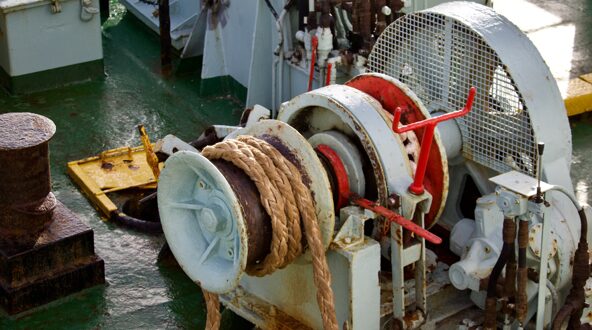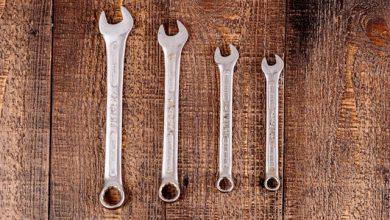Preventive Maintenance Tips for Hydraulic Pumps from Top Marine Engineers in Singapore

Your vessel’s hydraulic pumps are the beating heart of critical marine operations, from steering systems to cargo handling equipment. When these vital components fail at sea, the consequences can be costly and dangerous. That’s why savvy vessel operators turn to preventive maintenance—not just repairs—to keep their hydraulic systems running smoothly.
Reputable marine engineering companies in Singapore offer invaluable expertise in this area, bringing specialised knowledge of how marine conditions affect hydraulic performance. With their guidance, you can extend your equipment’s life, maintain operational reliability, and avoid those heart-stopping moments when systems fail at the worst possible time.
Why Preventive Maintenance Matters in Marine Settings
The marine environment throws unique challenges at your hydraulic systems—salt spray, humidity, temperature fluctuations, and constant vibration all accelerate wear. Unlike land-based equipment, when your hydraulic pump fails at sea, you can’t simply call for immediate technical support. You’re on your own.
Regular preventive maintenance gives you breathing room by identifying potential failures before they happen. You’ll save tremendously on emergency repair costs, avoid dangerous situations during critical manoeuvres, and extend your equipment’s useful life. Your investment in prevention today means fewer sleepless nights worrying about system failures tomorrow.
Common Hydraulic Pump Issues That Preventive Maintenance Can Avoid
- Overheating: Causes accelerated oil degradation and component damage
- Fluid contamination: Leads to internal scoring and precision part wear
- Seal deterioration: Results in leaks, pressure loss and system inefficiency
- Cavitation: Creates damaging vibration and noise while reducing pump life
- Pressure fluctuations: Indicates developing problems before catastrophic failure
- Air entrainment: Causes erratic operation and damages internal components
- Excessive vibration: Loosens fittings and accelerates component wear
Ship hydraulic pump system
Follow a Routine Inspection Schedule
You need to establish a consistent inspection routine based on your equipment’s operating hours, not just calendar dates. Walk around your hydraulic systems daily, using all your senses—listen for unusual noises, feel for excessive heat, look for leaks or discoloration.
Check pressure gauges weekly against normal operating parameters and record the readings. Don’t wait for problems to become obvious; subtle changes often signal developing issues that you can address before they escalate into expensive failures.
Monitor and Replace Hydraulic Fluid
Your hydraulic fluid degrades faster in marine environments due to moisture absorption and temperature extremes. You should sample and test your fluid monthly for contamination, viscosity changes, and acid levels.
Don’t just top up—schedule complete fluid changes based on operating conditions rather than waiting for obvious degradation. High-quality marine-grade hydraulic fluids might cost more initially but save you from premature pump failures. Remember that clean fluid directly translates to longer component life and more reliable operation.
Check for Leaks and Seal Wear
You’ll find that marine conditions accelerate seal degradation through a combination of UV exposure, salt corrosion, and temperature cycles. Inspect fittings, hoses, and sealing surfaces weekly for even the smallest weeping of fluid—these minor leaks often signal imminent failures.
Don’t overlook shaft seals, which frequently fail first but show subtle signs before catastrophic leakage. Keep spare seal kits on board and replace them preventively during scheduled maintenance rather than waiting for complete failure that could leave you stranded.
Inspect Filters and Clean Components
Your hydraulic system’s filters are its first line of defence, but they can’t protect your pump if they’re clogged or bypassing. Check filter indicators weekly and replace elements before they reach capacity.
You should also clean heat exchangers and cooling fins monthly, as salt buildup dramatically reduces cooling efficiency. Don’t forget the reservoir breathers that prevent moisture infiltration—these need regular inspection too. A clean system runs cooler, maintains proper pressure, and dramatically extends the life of precision components inside your pump.
Keep Accurate Maintenance Records
You’ll spot trends faster when you maintain detailed records of all maintenance activities and observations. Document pressure readings, fluid temperatures, filter changes, and any unusual conditions you notice.
Digital maintenance logs allow you to track patterns over time and predict when components might need replacement before they fail. Share these records with your marine engineering specialists during service visits—they’ll spot potential issues you might miss and help you fine-tune your maintenance intervals based on your specific operating conditions.
Final Thoughts
Your hydraulic systems represent a significant investment that deserves protection through proactive care. By implementing these preventive maintenance practices, you’ll dramatically reduce the likelihood of unexpected failures that can leave your vessel compromised at critical moments. Even with careful attention, hydraulic pumps eventually need professional service—that’s when partnering with experienced marine engineers makes all the difference.
They bring specialised tools, diagnostic expertise, and genuine replacement parts that ensure your hydraulic pumps continue performing reliably. Remember, in marine operations, prevention isn’t just about saving money—it’s about maintaining safety and operational capability when you’re miles from shore.

Source: Preventive Maintenance Tips for Hydraulic Pumps from Top Marine Engineers in Singapore


